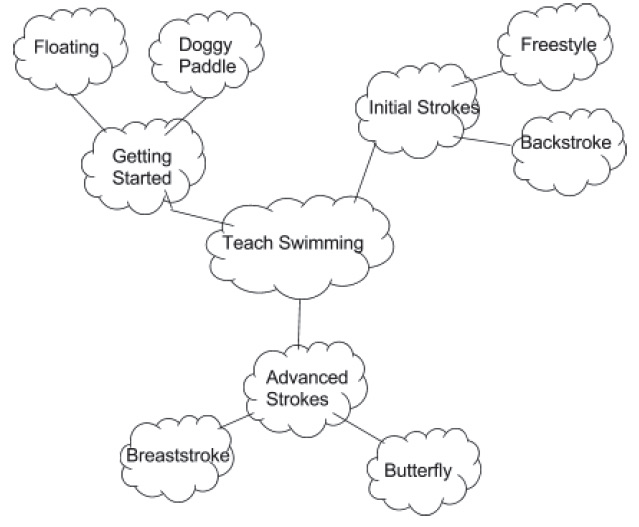1.4: What is Clustering?
- Page ID
- 4923
Clustering is a process in which you take your main subject idea and draw a circle around it. You then draw lines out from the circle that connect topics that relate to the main subject in the circle. Clustering helps ensure that all aspects of the main topic are covered.
Example
After using the brainstorm example, let’s say you decided on swimming lessons as your topic. Your main idea of swimming lessons would be circled in the center of your page. Anything else that you want to say about swimming lessons you would connect to the circle with lines. You can also add more lines to extend the ideas that relate to thoughts around the circle. When finished, your clustering might look like the following:

Figure \(\PageIndex{1}\)

